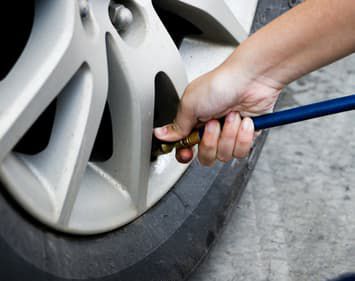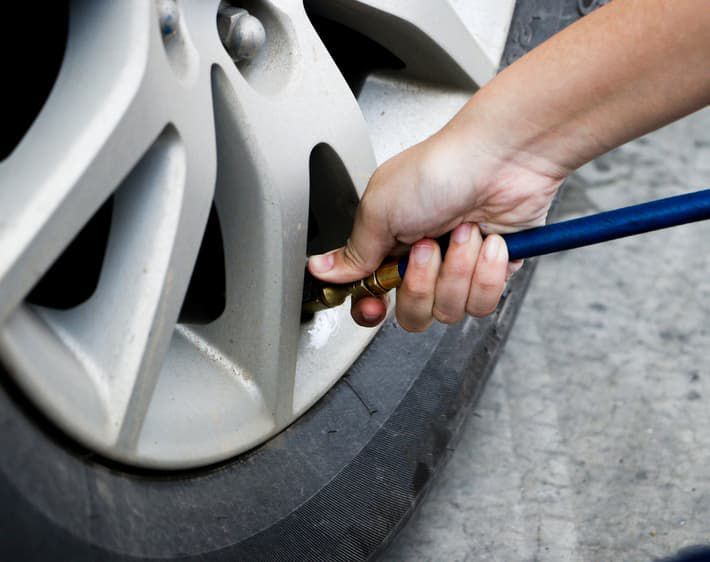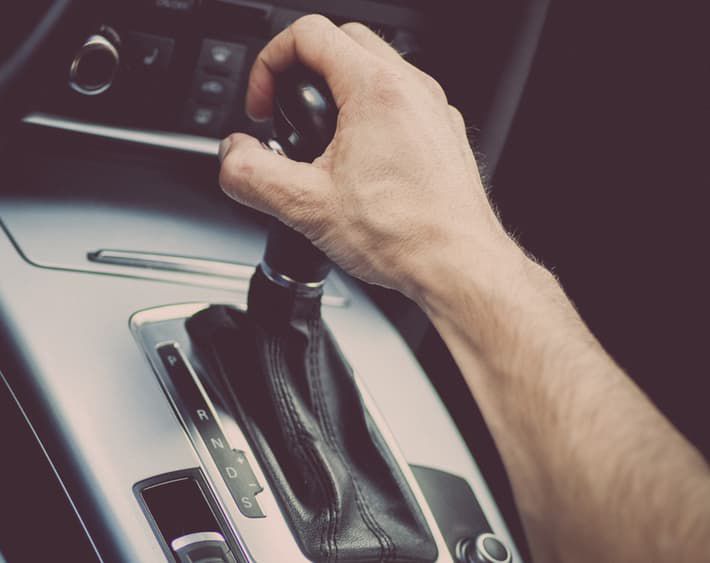
But the key to creating sustainable habits is to start with small, attainable goals, rather than attempting a total lifestyle overhaul right out of the gate. One of the best places to begin in reducing your eco-footprint is making sure your car is as environmentally-friendly as possible.
How To Make Cars More Eco-Friendly
You don’t need to leave your car parked to cut down on your environmental impact — you just need to make smarter choices while you’re on the road! If you're looking to shift gears into a more sustainable drive, we’ve compiled a list of ten easy and affordable ways to help make your car more eco-friendly that you can implement in no time at all!
1. Go in for routine preventative maintenance.
A well-maintained car is an environmentally-conscious car. If you’re sticking to your recommended maintenance schedule, you’re doing your part already. Regular maintenance services can help your vehicle run more efficiently, reduce your carbon emissions, and save you money in the long run.
Some of the most important routine maintenance services include: changing the oil, replacing spark plugs and wires, replacing fuel and air filters, and checking your onboard computer control system for any error codes.
2. Keep your tires properly inflated.
Keeping your tires well-inflated to the proper pressure can not only boost your gas mileage and increase your car’s safety, but it can help extend the life of your tires as well. As a rule of thumb, have your tire pressure checked every month. Get it done for free at any Firestone Complete Auto Care near you. Additionally, it's important to check your tires when the weather changes — during both the summer and the winter — as temperature can impact the air pressure in your tires.
3. Invest in fuel-efficient tires.
Fuel-efficient tires are a great investment for anyone looking to have a more eco-friendly ride. These tires feature low rolling resistance, meaning they require less energy to move them in the direction you're traveling. The easier the tires roll, the less friction they'll generate. And lower friction means less fuel is needed when you're cruising around.
4. Lighten things up.
The more you store in your car, the more gas it’s likely going to use since your vehicle has to work harder to haul that load around. Help improve your fuel economy by removing the excess weight from your vehicle.
The extra drag from a roof rack can spike your fuel consumption as well. It's best to remove the roof rack when it's not in use.
5. Maintain a steady speed.
Whenever you're traveling on an empty stretch of highway, it can certainly be tempting to push a little harder on the gas. But maintaining a steady speed and reducing how often you brake can help save a lot of fuel — not to mention it's much easier on your vehicle!
According to the U.S. Department of Energy, aggressive driving (speeding) can lower your gas mileage by about 15-30% at highway speeds and 10-40% in stop-and-go traffic. While the optimal speed for fuel efficiency varies by vehicle, it's typically between 35 and 50 mph.
6. Be kind to your brakes.
Frequent braking can not only wear your brakes down faster, but it can also burn gas quicker each time you have to get back up to speed. With this in mind, try to anticipate the road ahead of you as best you can to reduce unnecessary braking and excess fuel consumption. Whenever possible, opt for routes or highways that won't be clogged with traffic so you can keep a consistent speed for the duration of your drive.
7. Avoid unnecessary idling.
All of us have probably parked our car and left the engine running at one time or another. Letting your vehicle idle may not seem like a big deal if you're just waiting on a food order or in the pick-up lane at school. But a few seconds can quickly turn into minutes, and those minutes are responsible for burning up a lot of fuel.
Turning off (and then restarting) helps reduce fuel consumption and can be a much better option for those times you’d typically be sitting idle.
8. Go easy on the A/C.
As nice as it is to indulge in air conditioning on a hot day, A/C contributes to fuel consumption. In fact, using air conditioning under very hot conditions can reduce a conventional vehicle's fuel economy by more than 25%, particularly on short trips, notes the U.S. Department of Energy.
When you're in the driver's seat, decide whether you need to crank up the air or if you could get away with a cracked window instead. If you have to use the A/C, aim for a more comfortable, moderate setting rather than a steady blast of freezing temps.
9. Fill up the right way.
The way you put gas in your car matters quite a bit. When you top off your tank with a little extra fuel after the pump has stopped, you can increase the possibility of harmful vapors escaping from the tank and releasing into the air.
Luckily, many modern cars are equipped with an emissions canister. The canister vent valve is what releases the vapor fumes back into the atmosphere. By overfilling your fuel tank you risk fuel coming up through the filler neck and spilling out or/and possibly getting fuel into the emission canister assembly. It's best to stop pumping once the pump has finished.
10. Use safer cleaning methods.
Being an eco-friendly auto-owner also relates to how you clean your car, and a few changes can make a real difference. Switch to a waterless car wash instead of the hose to save a serious amount of water. According to Washos, the typical hose and bucket car wash at home uses 80-140 gallons of water and a commercial car wash uses 45 gallons per wash. But a waterless wash? Just 4-6 ounces of water!
Waterless products, typically sprays, can quickly clean your car and leave a protective finish on everything as well.
Get Eco-Friendly with Firestone
Compost pile? Check. Recycling bin? Check! More eco-friendly driving habits? Why not start at your local Firestone Complete Auto Care! Get eco-friendly tires, routine maintenance services, exhaust system inspections and repairs, and more from our expert technicians at more than 1,700 locations. We'll help you start driving toward a more sustainable lifestyle!



